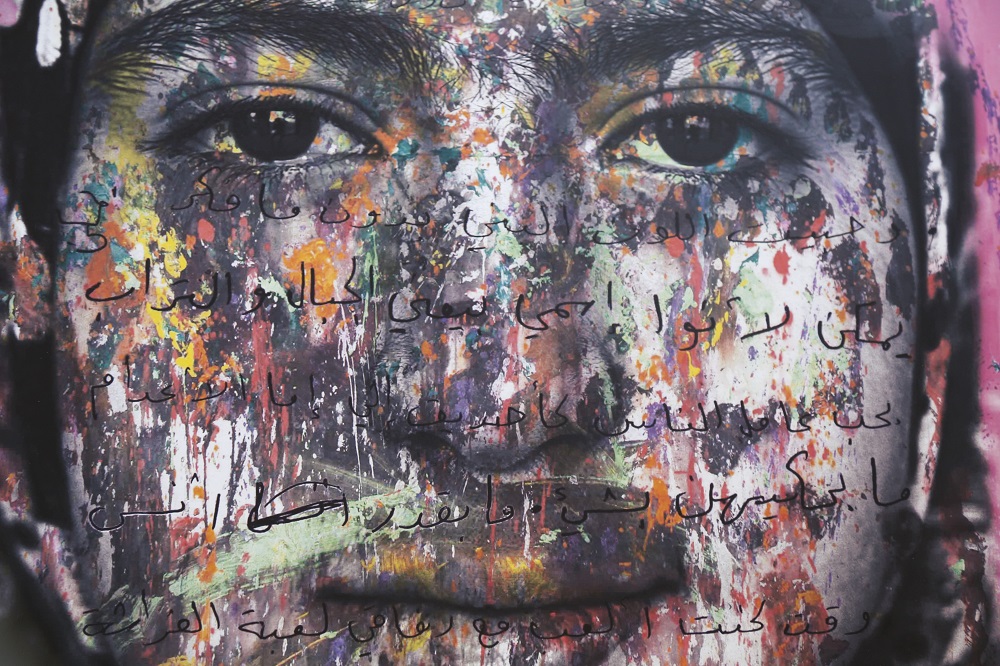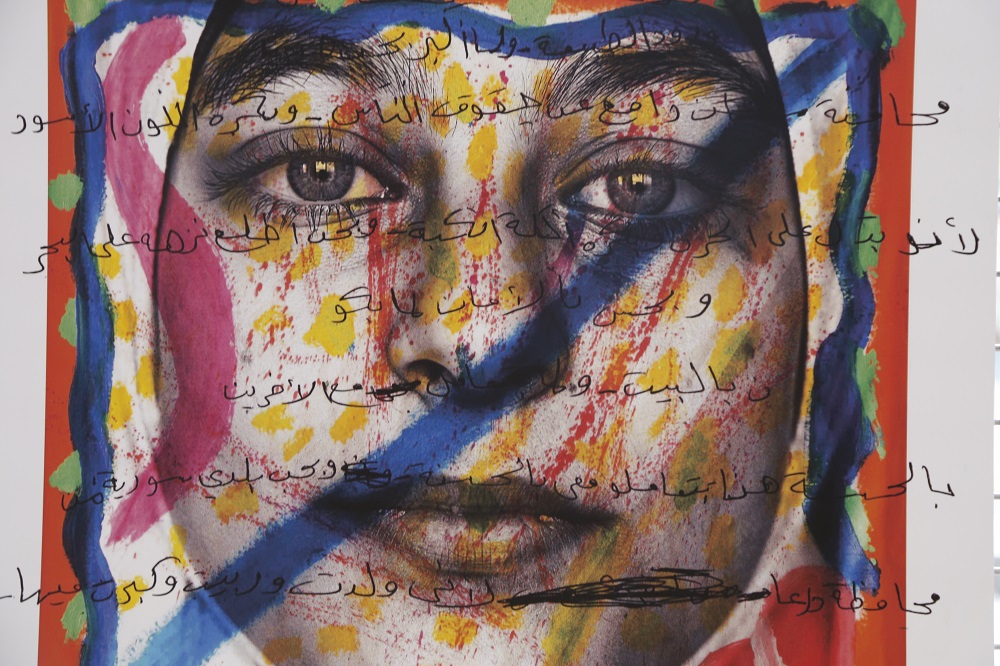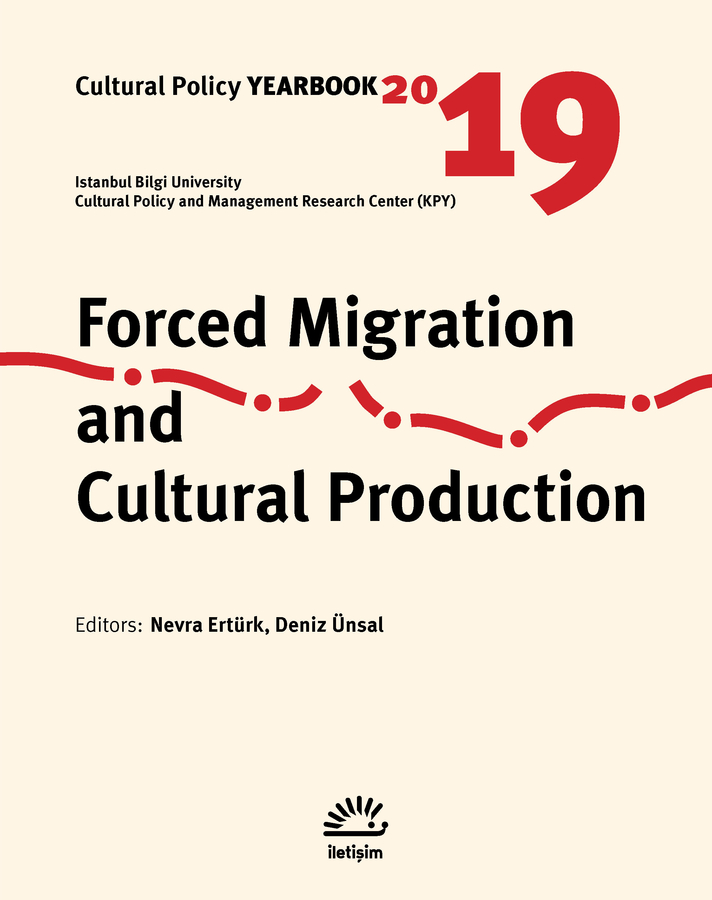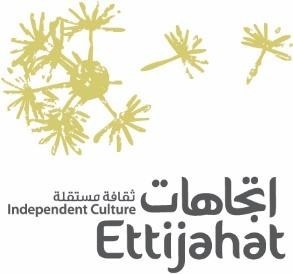

Social change and resilience are dominant concepts often used in descriptions of the Syrian context. However, these terms come with their own challenges and obstacles. Over the last eight years, the world has increasingly presented Syria as a hopeless country and characterized the movement of Syria’s displaced peoples and refugees as a crisis. Since 2013, in particular, a number of solutions have been designed to address this “crisis”. However, this choice of words has reinforced the narrative that the presence of Syrians outside Syria is in itself a problem that needs to be solved. Moreover, it has promoted the idea that the Syrian diaspora have no positive contribution to make to their hosting communities, be it economic, social or political.
Several methods have been used to respond to this situation, but one, in particular, has been neglected. Very few have considered the possibility of strengthening the arts sector and stimulating cultural production as a means of mitigating harmful narratives and building more effective, stable and open societies. The arts have been erroneously considered as a complementary tool or activity rather than a fundamental framework, approach or strategy that can support change. As a result, this has widened the gap between artists and institutions and between art producers and members of diaspora communities, pushing everyone to doubt whether the arts sector is really capable of questioning or influencing social change in periods of ‘crisis’.
This article considers possible frameworks for designing programmes that respond to questions of social change. It also examines how these programmes can contribute to the stability and health of communities. i.e. by investing in arts and creative practices and consolidating the experiences of arts practitioners. However, these improvements are only possible when the creative practices in question are not compromised or restricted. Furthermore, the local contexts in which programmes are implemented must be taken into consideration when designing the necessary tools. It is in light of these needs and challenges that Ettijahat – Independent Culture and the British Council designed Create Syria.
“My Eyes” Photography Exhibition, CCF, Basma & Zeitouna © Create Syria, 2016.
Background
The Syrian disaster has caused the largest mass displacement since World War II. As of December 2017, 5,456,108 displaced refugees found refuge in neighboring host countries with around 3,400,195 in Turkey, 997,905 in Lebanon, 654,903 in Jordan, 246,974 in Iraq and 126,027 in Egypt.[1]
Since 2013, the experience of ‘exile’ has created a new lived reality for many Syrians. While many nations have experienced this situation previously, the Syrian community is going through a new form of exile at a scale and intensity that has attracted global interest, concern and intervention. This new reality for Syrians has also been characterized by a dominant narrative across hosting countries and communities that has labelled the presence of refugees as a “crisis” or “disaster”.
The concepts of crisis and disaster have - in many contexts – transformed from a temporary or exceptional situation into a normal state of being. In several parts of our region, many say that they feel normal in a crisis rather than the other way around and that being human implies being in a state of constant crisis.
Despite the protracted nature of the instability facing our region, decision makers working closely on Syrian-related issues have failed to provide a long-term response to this latest wave of crisis. Instead, many ‘Syria-response’ actions were implemented on the short to medium term.
Some argue that this approach has been shaped by the emerging contemporary stigma against refugees.
“The figure of the ‘asylum seeker’, once prompting human compassion and spurring an urge to help, has been sullied and defiled, while the very idea of ‘asylum’, once a matter of civil and civilized pride, had been reclassified as a dreadful concoction of shameful naivety and criminal responsibility” argues the late Zygmunt Bauman in his book Wasted Lives (p. 57).
While some have sought to highlight Syrian spending and investment in host communities and the positive social interaction Syrians and their host communities[2], the dominant narrative across the region has instead focused on the political, social and financial strain that this crisis has placed on already fragile infrastructure in hosting countries.
This overwhelmingly negative discourse and sentiment has meant many international and regional actors were tasked to respond to the “burden” of refugee influxes in the region, rather than invest long-term in creating a new functional and active energy that can positively contribute to the economic, political and cultural context in hosting societies.
In this challenging context, the arts have not been treated as a priority nor viewed as an essential tool in the process of creating better conditions for both hosting and displaced communities.
Arts and Culture in Displaced Communities since 2013
Since 2013, the use of culture and arts in dealing with displaced Syrian communities started to rapidly emerge. However, most of the activities in this regard were rather small and short-term, with little to no sign of serious attempts at developing and implementing sustainable models and initiatives.
With a wide range of local and international actors seeking to respond utilize arts and culture in their response - many with limited experience and understanding of the Syrian context - it was evident that some emerging initiatives chose to replicate models used in service-provision projects implemented elsewhere. This meant that many organizations adopted a ready-made template that had been previously used for other communities, often from different regions, going through another type of “disaster”.
In this scenario it was clear for Ettijahat – Independent Culture[3]3, a Syrian cultural organization founded in the end of 2011, that analyzing and understanding the different contexts and dynamics of each individual ‘disaster’ or ‘crisis’ is an important first step in the process of designing cultural frameworks. Another important principle is the need to avoid one-size-fits-all approaches when seeking to address the idea of disaster. Thus, it was important to consider the following questions: who classifies an event as a disaster? Who are the victims and how? How can we avoid falling into the trap of making generalizations, as if this disaster has no root causes? How can we move from talking about the past through a disaster-oriented lens to looking forward to the future?
These questions are directly linked to the common belief Ettijahat shares with its partner, the British Council. Indeed, both believe that investing in and motivating artists and cultural actors plays an important role in building and maintaining open, inclusive and stable societies. In light of the current circumstances, both Ettijahat and the British Council felt it was necessary to develop a new model that prioritizes arts in the process of community revival. A key element of this is creating programs oriented towards artists and practitioners who are socially-engaged and seek to answer questions regarding the role of arts and social change. These values and principles were solidified through the process of developing a theory of change, which is a fundamental pillar in the design of the Create Syria Project.
“My Eyes” Photography Exhibition, CCF, Basma & Zeitouna © Create Syria, 2016.
Create Syria
In 2016, the first edition of “Create Syria: A Project to Empower Syrian Arts in Exile” was launched. This project was the built on a long process of preparation and deep analysis of the current cultural and social needs with partners. By the end of its second edition in Spring 2019, the project had supported more than 60 artists to produce artistic and cultural initiatives that work in community contexts. More than 600 members from different communities directly participated in these initiatives and more than 70 experts and 20 organizations supported or engaged directly in the work.
This diversity of partners and beneficiaries within the project is due to the richness of the project model which consists of 4 components, all of which serve the purpose of responding to the needs of the main target group- artists and cultural practitioners. The objective is to work within community contexts, assist artists in developing their knowledge and techniques, grow their relationships and understanding of the societies where they work and enable them to design projects which are sustainable and able to respond to community needs. The model, in working directly with a range of projects, also seeks to promote this work and raise the profile of the important effect of arts in times of crises.
The four components of the model are as follows:
Capacity Building: The capacities of artists are developed through intensive trainings and follow-up, so they can design and execute artistic initiatives with different elements. The trainings include conventional methods such as strategic planning and administration. The capacity building component of the “Create Syria” project was significantly developed in the second edition of the project to better accommodate the objectives of the project. Supporting project development and implementation Conducting studies and showcasing the work achieved. Advocacy, through which Ettijahat and the British Council target institutions that are interested in Syria and its future, in particular institutions that recognize the important role of the arts in this current context.
The second edition ran throughout 2018 and the first quarter of 2019, and supported five different Syrian and Lebanese projects and artistic interventions namely: Seba Khourani “The Dual Presence and Absence of Sound”, Chadi Markach “My Imagination in Always Bigger”, Zoukak Theatre Company: The Zoukak Theatre Mentorship Project, Al Caravan Project “From Knock till Bye (From A to Z), Seenaryo “Plus Group”. The artists and community-based arts initiatives selected through an open call work with Syrian/Palestinian/Lebanese communities only in Lebanon. The project was supported by cultural experts Rana Yazaji and Hanane Haj Ali while elements of the content and project were developed with the support from The Change Collective – a UK organization which specializes in working through the arts to build social change.
There are good indicators of positive results that speak directly to the effectiveness of the activities and outputs. There has been a solid positive outcome in the overall implementation of the project. The capacity of five different organizations and over 58 artists and practitioners was raised to produce five different projects that clearly impacted the different direct communities each project addressed (to varying degrees). Local communities (Syrian refugees, Lebanese, Palestinian refugees, Philipino and Africans) were involved in the production of artistic projects thus contributing to more cohesive societies. A UK component was developed to the project that was expanded through three main elements: the tour of artists and practitioners to the UK, the collaboration between Ettijahat and the Change Collective, and the participation of UK based organizations in the Brink of Change forum.
The two-day forum “On the Brink of Change” was organized in Beirut with the purpose of bringing together practitioners working on community-based initiatives (32 speakers, 120 artists, 300 experts and 15 organizations). This forum was planned as an opportunity for artists and arts organizations to share experience, techniques and models, discuss challenges, skills gaps and explore different opportunities for collaboration and growing their collective practice.
In the long term, the project seeks to create a support network for Syrian artistic production that will strengthen the effectiveness of contemporary artistic practices and new cultural initiatives. The beneficiaries will be Syrian citizens at large, in light of the big changes taking place in Syria at all levels.
Both Ettijahat and the British Council believe that creating a space for dialogue and interaction between dedicated Syrian artists, networks of Syrian artists in the diaspora, and decision makers will increase awareness of the critical role of the arts in periods of crisis.
In this moment, it is important to work on building the creative and analytical skills of Syrian artists in the diaspora. Indeed, providing them with a common space to work should increase their ability and the ability of communities to discuss common challenges. This current aim can be considered as entry point for the Create Syria project to look into future progress which includes geographical expansion to surrounding countries.
After two pilot editions in different contexts that showed a large amount of displacement of the Syrian refugees in Lebanon, and at a moment where all the current data have clearly shifted and many Syrian artists were compelled to leave Lebanon to other countries, the process of developing the third edition of the project was certainly effected in order to respond to these new needs and in accordance to the learning that was obtained in its journey. Thus, a conclusion on two levels have seen the light and must be taken into consideration in upcoming development which is; expanding to countries surrounding Syria, and how can the project -though specified to support social change in exile -ask questions on how it can support social change inside Syria, and what is the most reasonable frame of potential work while taking in consideration the social and cultural sensitives to work in such a context.
This project is implemented in compelling circumstances. Ettijahat believes that arts can help close the gap between different communities and thus stresses the importance of promoting the value of Syrian culture and artistic expression. This is all part and parcel of the project, which considers artists and cultural actors as the agents of creativity and change in times of crises.
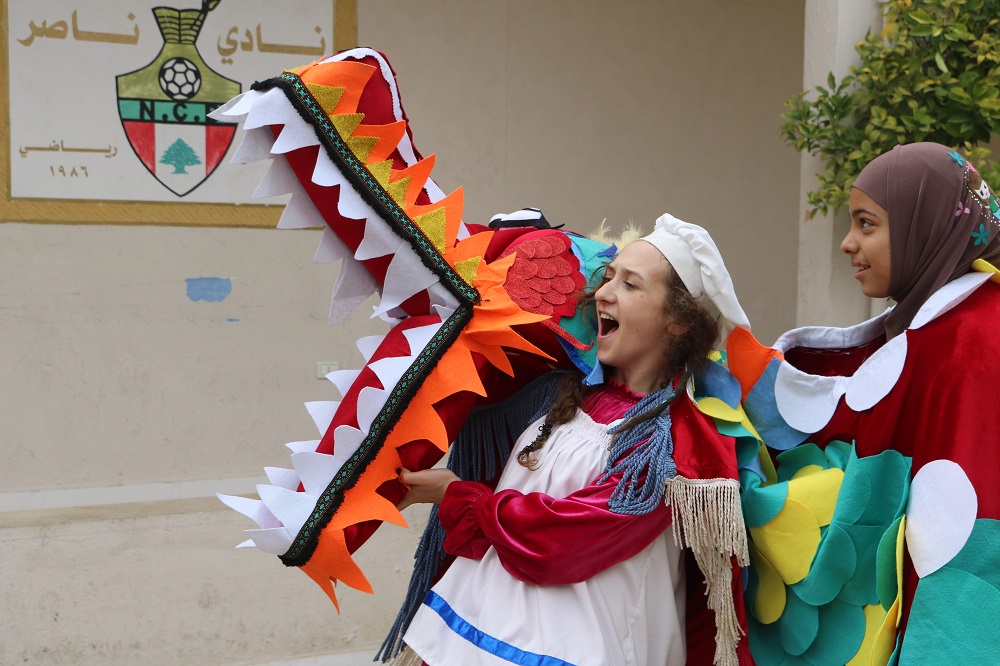
“My Imagination is always better” © Create Syria, 2018.
What Is Next in the Arts Fields?
Despite its popularity, the concept of response or integration remains problematic. Indeed, there is a great fear of social separation that still obstructs the work of cultural institutions and artists. To support this, we draw attention to an example of international practices:
When we consider Syrian theater after 2011, we notice that in the context of working with communities, there is a phenomenon or trend towards focusing on Verbatim Theater or documentary theater. Many of such plays merely convey facts already communicated or documented in the media or share individual experiences – for example through the reading of individual testimonials from people of different backgrounds who may not otherwise have experience of created theatre. In this type of theatre the circumstances, backgrounds and causes of the crisis or disaster are often omitted, which some argue negates the importance of the theater. There is a confusion between the role of television that focuses on the "what?" in the sense of narrative, and the role of cinema and theater, which focuses on the "how?" i.e. the context of the narration. Some current theatrical productions do not pay attention to this distinction. It is noted that some theater artists do not find it important to look at the causes and rather prefer to focus on experience and feeling.[4]
Many other questions arise in the current context: How can our internal policies as practitioners in the cultural field be effective, each in its own country? What are the values that organizations should follow when it comes to arts and how do these values affect practice? Are they found in the course of work and production? Or is it in the product itself? What is the artist’s responsibility towards the disaster and why is the artist expected to communicate facts and experiences or seek resolution for root causes of disaster or crisis?
How can artists adapt to pre-existing spaces as well as fragile and cracked structure? How can Syrian artists contribute, through their art, to the Lebanese or other hosting society and work in an environment in which artists from the host community themselves face serious challenges because of problems in their own local cultural structure? These kinds of questions are not extensively discussed or addressed, despite their importance in the current context and period. Thus, Ettijahat believes there is a need to work together as artists with cultural activists or experts from outside the artistic field to have a deep impact. Coalitions that combine human rights activists, artists, and human rights institutions can have a greater impact than actors working in a way that isolates competencies and interests from one another.
What About The Future?
The approach adopted by Create Syria sought to question and reflect on the role of arts in social change. It aims at promoting the value of the arts by questioning the core concepts and narratives around ‘risk’, ‘crisis’ and ‘emergency-response’. The program acknowledges that risk is a fundamental aspect of our social reality. In fact, risk is illustrated on several levels, including: the lack of justice, the lack of clarity for the future for Syria, inequitable rights for the displaced and the exiled, the treatment of refugees as a “crisis” and the fragility of cultural organizations which are burdened by constant demands despite their limited capacities, lack of resources and long-standing lack of investment. The concept of emergency is, in fact, a warning sign that signals the necessity to reflect and join efforts, not to produce short-term solutions but rather to launch serious efforts starting now, so that, in ten years, individuals will be better able to adapt within their new society.
One of the working strategies in this context is to be open to and learn from other experience and to address the question of social change from the perspective of values and practice. Another strategy is to repeatedly illustrate how the arts are a powerful method in improving people’s lived reality and supporting them to overcome various forms of challenges, albeit in a realistic and grounded way that sets the record straight and doesn’t burden artists or the arts in general with objectives and responsibilities beyond their capacity and control.
[1] Inter-Agency Coordination. (2016). 3RP Regional Refugee and Resilience Plan 2017-2018 in response to the Syria crisis- http://reporting.unhcr.org/sites/default/files/ga2017/Syria%203RP%20 Regional%20Strategic%20Overview%202017- 2018.pdf?v2
[2] See 101 Facts & Figures on the Syrian Refugee Crisis –Syria’s Displacement Crisis in Numbers - In Neighboring Host Countries – American University of Beirut AUB – 2017 - https://www.aub.edu.lb/ifi/Documents/publications/books/2017- 2018/20180601_101_facts_and_figures_on_syrian_refugee_crisis.pdf
[3] Ettijahat seeks to activate and render the role of independent culture and arts more positive, in the process of cultural and social change, this aim is achieved by supporting artists and undertakers of cultural initiatives, enabling young researchers, working to build consensus and alliances between individuals and cultural institutions, promoting the arts and artists through regional and international platforms, and helping Syrian communities wherever they have access to culture and arts.
[4] Create Syria – Second Edition – On the Brink of Change Forum, Organised by Ettijahat-Independent Culture & The British Council – Creativity in times of Crisis Session – Ziad Adwan- February 2019 – Lebanon.

